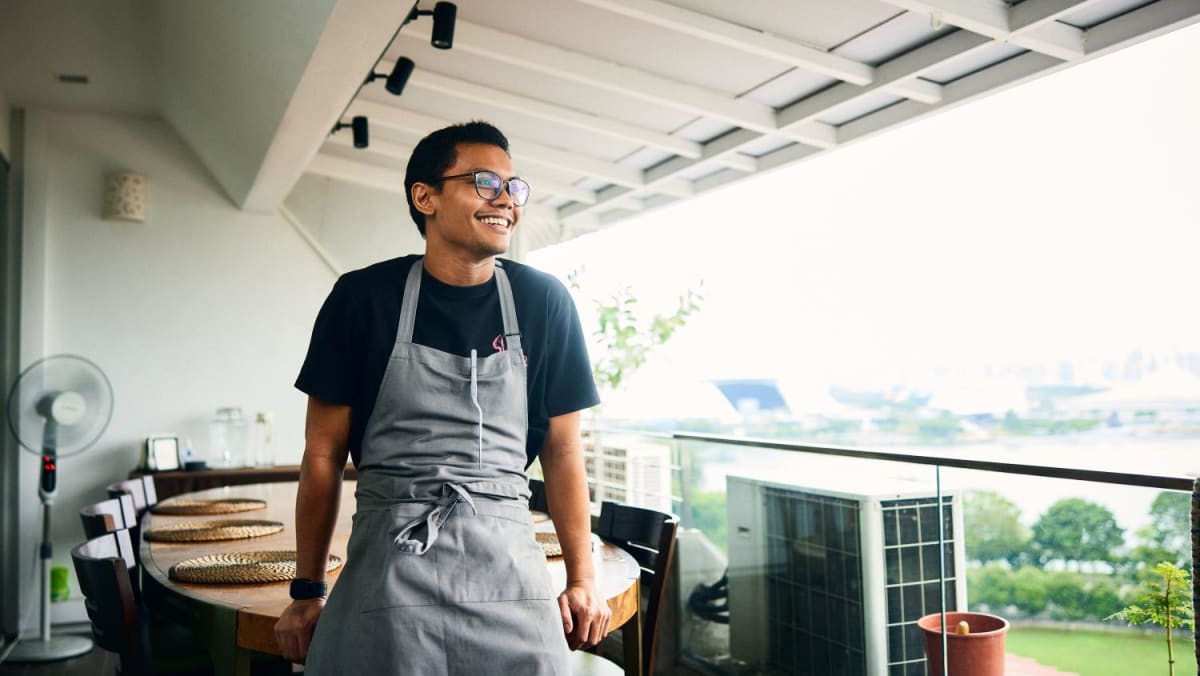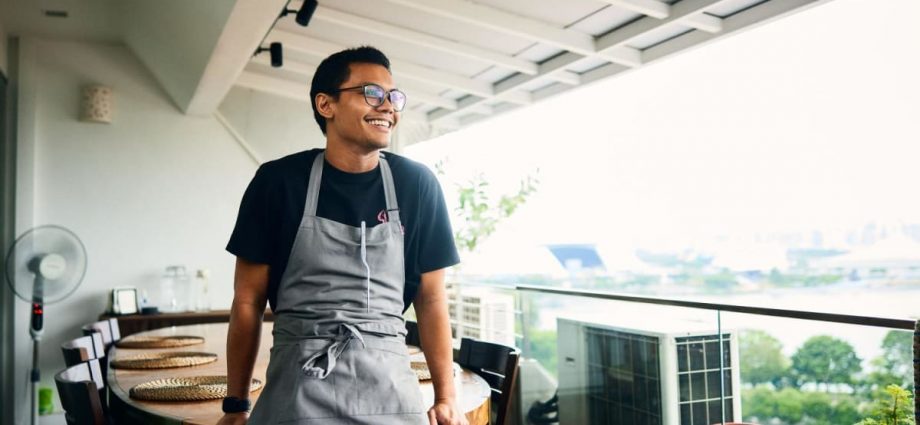
Another example comes in the form of the kueh bakar berluak dish. It’s inspired by a spongy cake called akok, which he sampled in Kelantan. “They cook it in a mould over burnt coconut husks, and they cover the mould with charcoal, so it acts like an oven. I use the same cooking method,” he said, but he puts a little crab fat and a pinch of garam masala into the batter.
Even his sambals, curries and sauces are all laboriously cooked from scratch over charcoal. “If you cut corners, the flavours will be very different,” he asserted. “Even using a packet of coconut milk you get from the supermarket will give you a very different taste, compared to when you blend and squeeze your own fresh coconut,” he explained, lamenting that “the next generation won’t know the proper way of cooking Malay food… They will say, ‘Let’s just buy coconut from the supermarket.’”
Wherever he does use non-traditional cooking methods, it’s with the aim of letting ingredients shine. Instead of boiling pumpkin and beef in a pot, for instance, he cooks them sous-vide for more tenderness and texture.

